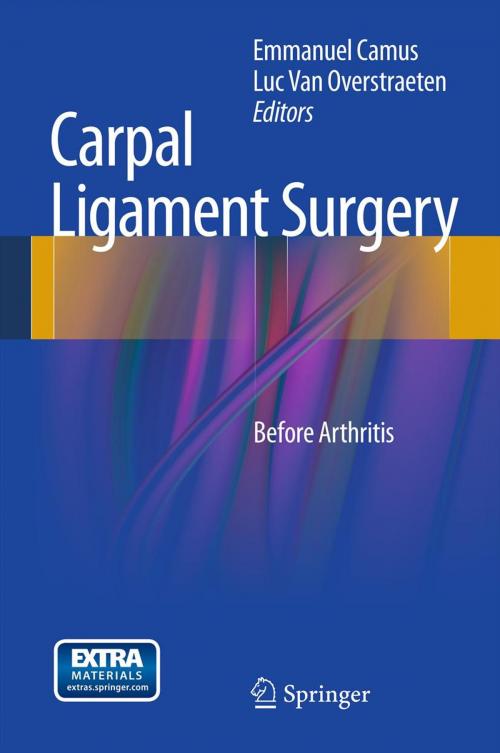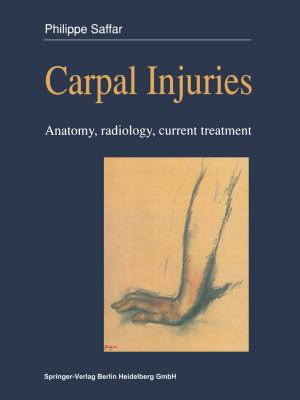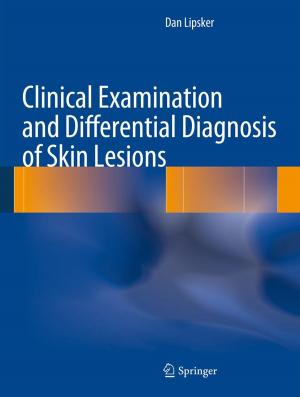Carpal Ligament Surgery
Before Arthritis
Nonfiction, Health & Well Being, Medical, Specialties, Orthopedics, Surgery| Author: | ISBN: | 9782817803791 | |
| Publisher: | Springer Paris | Publication: | March 14, 2013 |
| Imprint: | Springer | Language: | English |
| Author: | |
| ISBN: | 9782817803791 |
| Publisher: | Springer Paris |
| Publication: | March 14, 2013 |
| Imprint: | Springer |
| Language: | English |
It has by now been established that carpal ligamentary lesions may lead to instability and ultimately to carpal arthritis. However, the variety of anatomopathological classifications and the multiplicity of surgical repair techniques reflect the difficulty of grasping this ligamentary pathology.
Clinical analysis and traditional investigation techniques must successfully address the complexity of the wrist, which is largely due to the number of synchronized bones involved in every movement of the hand. The clinical analysis of the wrist is insufficient to precisely measure the mobility of each carpal bone, making paraclinical examinations also significant for clinical diagnosis. The tools available today range from X-rays to arthroscopy, including arthroCTscans and soon MRI. As for repair techniques, their diversity must not hide the fact that a biomechanical and physiological principle is involved and must be identified.
This book presents the findings of an expert group in the field of wrist pathology. It seeks to analyze, understand, explain and make comprehensible, if not obvious, the reflections that each practitioner should employ during the diagnosis and treatment of carpal ligamentary lesions. The focus is consciously not on degenerative carpal pathology, which usually enjoys more visibility. We hope that readers will benefit from the fact that fragmented pieces of knowledge are gathered in a single work, that they will find in this initial synthesis an inspiration to rethink a difficult and sometimes thankless surgery and to further the surgical advances of the 21st century.
It has by now been established that carpal ligamentary lesions may lead to instability and ultimately to carpal arthritis. However, the variety of anatomopathological classifications and the multiplicity of surgical repair techniques reflect the difficulty of grasping this ligamentary pathology.
Clinical analysis and traditional investigation techniques must successfully address the complexity of the wrist, which is largely due to the number of synchronized bones involved in every movement of the hand. The clinical analysis of the wrist is insufficient to precisely measure the mobility of each carpal bone, making paraclinical examinations also significant for clinical diagnosis. The tools available today range from X-rays to arthroscopy, including arthroCTscans and soon MRI. As for repair techniques, their diversity must not hide the fact that a biomechanical and physiological principle is involved and must be identified.
This book presents the findings of an expert group in the field of wrist pathology. It seeks to analyze, understand, explain and make comprehensible, if not obvious, the reflections that each practitioner should employ during the diagnosis and treatment of carpal ligamentary lesions. The focus is consciously not on degenerative carpal pathology, which usually enjoys more visibility. We hope that readers will benefit from the fact that fragmented pieces of knowledge are gathered in a single work, that they will find in this initial synthesis an inspiration to rethink a difficult and sometimes thankless surgery and to further the surgical advances of the 21st century.















